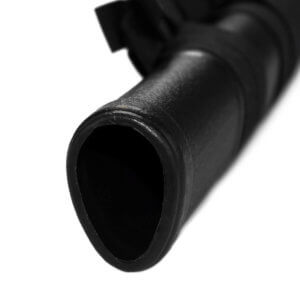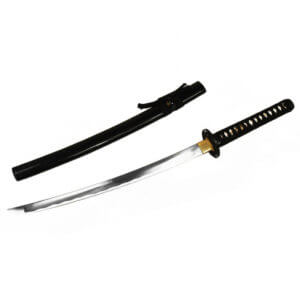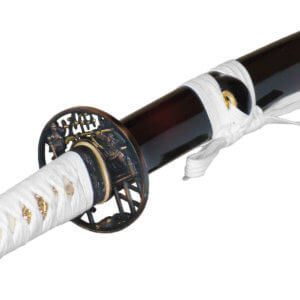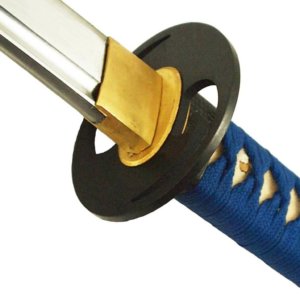It is a metropolis of contrasts: Japan's capital Tokyo. Bright and colourful, full of technological progress with a modern lifestyle on the one hand, tradition and history on the other. Shrines, temples and culinary highlights can be found here alongside hip highlights of the manga or computer world.
But did you know that the metropolis of millions once grew out of a castle with a few houses around it? The samurai also helped make the city what it is today.

From a small settlement to a metropolis of millions
Today, around 10 million people live in Tokyo. It is hard to imagine that this metropolis once emerged from a small village in a valley on Japan's largest island, Honshu. 550 years ago, there were barely more than a few houses in the same place.
The settlement then known as Edo first appears in the history books in the 12th century. A single man is said to have built a house near the mouths of the Hirakawa and Sumida rivers. However, the official founding year for Tokyo is 1457, when Prince Ota Dôkan built a castle where the Imperial Palace stands today.
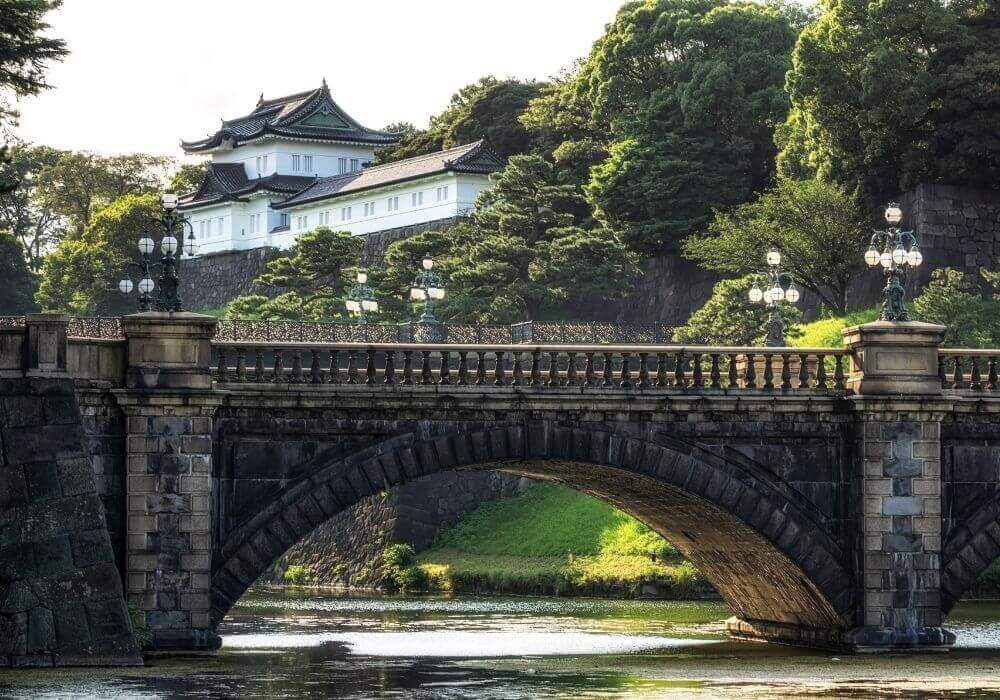
It only took 300 years to turn the small settlement into a city of millions. By the middle of the 18th century, over a million people were already living in Edo. Samurai leaders strongly influenced the development of today's metropolis, recognising the geographical advantages (a protective bay, the distance to the Asian mainland and intersecting roads to the east and north).
Shogun Toyotomi Hideyosh moved the seat of government to Edo as early as the end of the 16th century, thus signalling the start of the city's heyday. Over time, the shogun, as the leader of the samurai warrior caste, had gained more power than the emperor himself and was the actual head of state.
The city only became Tokyo in the 19th century after Emperor Meiji expelled the last shogun from Edo Castle in 1868 and renamed the city Tokyo (= eastern capital). The city opened up to the achievements of the West: stone houses were built and trams were also introduced.
Earthquakes and war gave the city its current appearance
But this was by no means the end of the city's development. After all, heavy blows were to reshape the cityscape. The Meireki fire in 1657 was the most devastating fire, but not the last! It claimed around 100,000 lives and led to the establishment of a professional fire brigade by the shogunate.
However, almost 300 years later - on 1 September 1923 - an earthquake raged that destroyed large parts of the city, followed by another three-day fire. Around 140,000 people died in Tokyo and the surrounding area. The castle also burned down and had to be rebuilt. The reconstruction of the city took seven years and was used to adapt the infrastructure - the characteristically wide streets were built.
But the Second World War also left its mark on Tokyo. Bombing raids in 1945 claimed another 145,000 lives and destroyed the city once again. The castle was also completely bombed and today's Imperial Palace stands as a "new building" on the original site. Tokyo recovered quickly. By 1955, the metropolis already had six million inhabitants.
Opposites attract - Tokyo today
Today, Tokyo has many faces, which is what makes the city so attractive and special. The metropolis now consists of 23 different districts - each with its own style. The city was officially dissolved in 1943 and the districts have operated as independent municipalities ever since. Nevertheless, they are still grouped together under the name Tokyo. Around 8.6 million people live in the city, and together with the suburbs there are up to 39 million inhabitants.
Tokyo does not have a real centre, but the city districts have different characteristics. "Marunouchi" is home to the Imperial Palace and offers the highest property prices in the world, while "Ginza" is considered Japan's shopping centre, where expensive brand shops have set up their flagship shops in multi-storey shops and offer a very special shopping experience.
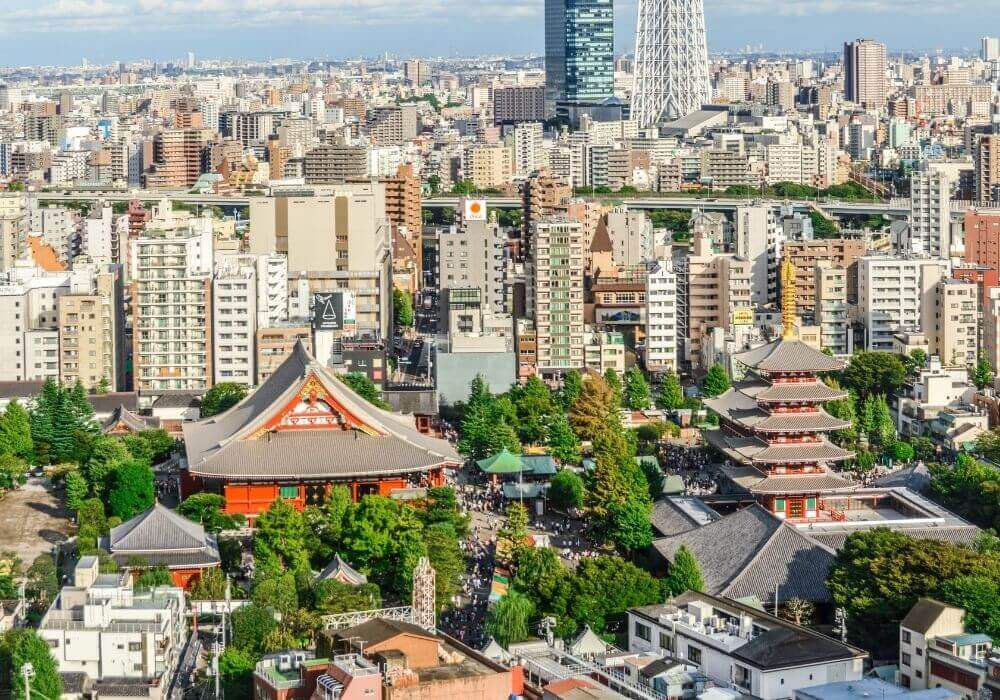
"Shinjuku" offers skyscrapers, neon and myths as well as Japan's number one transport hub, "Roppongi" is the nightlife district par excellence, "Akihabara" is considered a mecca for fans of manga and electronics. "Ebisu and Nakameguro are considered Tokyo's artists' neighbourhoods and offer peace and quiet in contrast to many other hectic districts.
The "Ueno" neighbourhood gives an impression of old Tokyo - where old houses and popular temples have preserved some of the old charm. But there are contrasts here too: the historic sanctuary of Yanaka, where you can experience Tokyo as it once was during the Edo period with beautiful temples and small low houses, is located not far from the world's tallest tower, the Tokyo Skytree - an expression of modernity par excellence.
These and other contrasts attract numerous tourists to Tokyo every year - because no other city offers as many contrasts between modernity and tradition as Japan's capital. The city recorded over 28 million visitors in 2017.
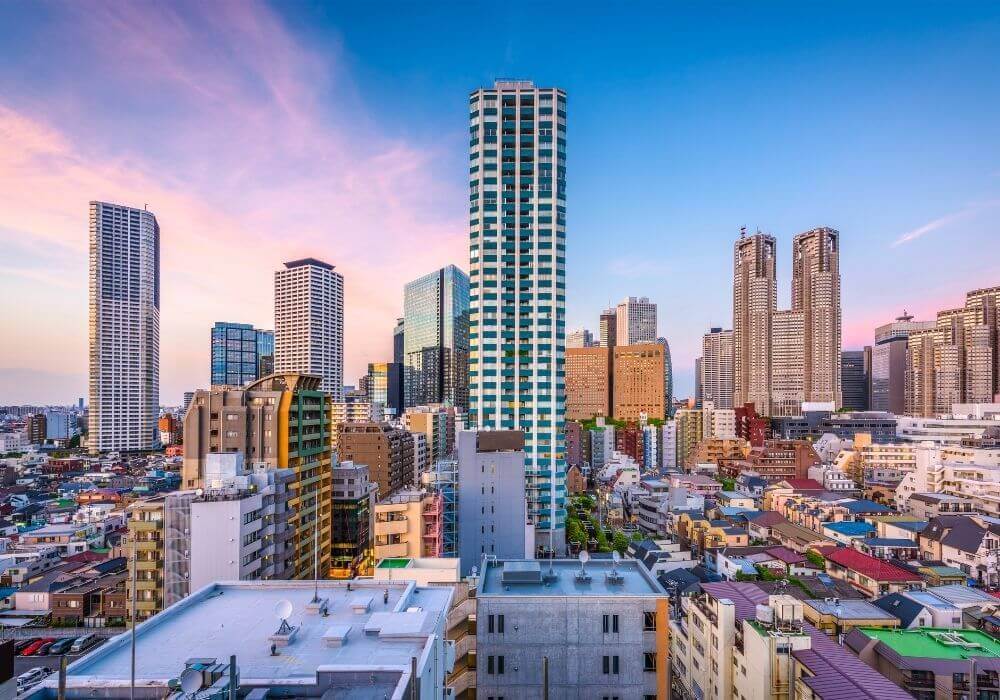
On the trail of the samurai and ninja in Tokyo
Western tourists usually think of the buzzwords Ninja, Samurai and sushi when they think of Tokyo. And of course there are plenty of options for this Western view. The metropolis has an almost overwhelming number of restaurants. Although the famous Tsukiji fish market is now located in ultra-modern market halls, it is still one of the most important places to go when it comes to sushi.
If you don't just want to immerse yourself in the culinary world of Japan, you can also experience the world of the ninja in the sinister Ninja Akasaka restaurant. Trapdoors and hidden rooms lead to the table, the food is shaped like throwing stars - reservations are recommended in advance.
In Tokyo, it is also easy to follow in the footsteps of the samurai. First and foremost is the Samurai Museum, which is just an eight-minute walk from Shinjuku Station. Armour and helmets are on display here and Japanese swords and other old samurai weapons can be admired. A photo with a suit of armour is also possible (booking in advance is recommended) and will make your visit to Tokyo unforgettable.
Not far from the Imperial Palace is the statue of Kusunoki Masahige - a Japanese samurai who fought for Emperor Go-Daigo in the Genkō War. The famous 47 tombs of the samurai are located in Sengaku-ji - a Buddhist temple in the Minato district. The Atago Shrine in the same district is still unknown to many tourists, but it is a must-see when travelling in the footsteps of the samurai. It is said that the young samurai named Magaki Heikurou once rode up the steps on his horse in just one minute and took 45 minutes to descend, which subsequently brought him nothing but happiness in his life.
If you want to fully immerse yourself in the world of the ninja and samurai, you can book courses and programmes in many places in Tokyo, slip into a ninja outfit and learn the art of samurai swordsmanship. Fans get their money's worth throughout the city.
Tourist highlights for every taste
But Tokyo is so much more and should not be visited in a rush. Countless attractions beckon - from historical monuments to unique highlights. The old market street Ameyoko, which resembles an oriental bazaar, is a contrast to the modern shopping districts.
As the largest park, Ueno Park not only attracts locals, but also numerous tourists with more than 8,000 trees for strolling and relaxing. Visitors should also plan to spend time in this oldest and first park in Japan, where there are numerous museums and the country's oldest zoo to visit.
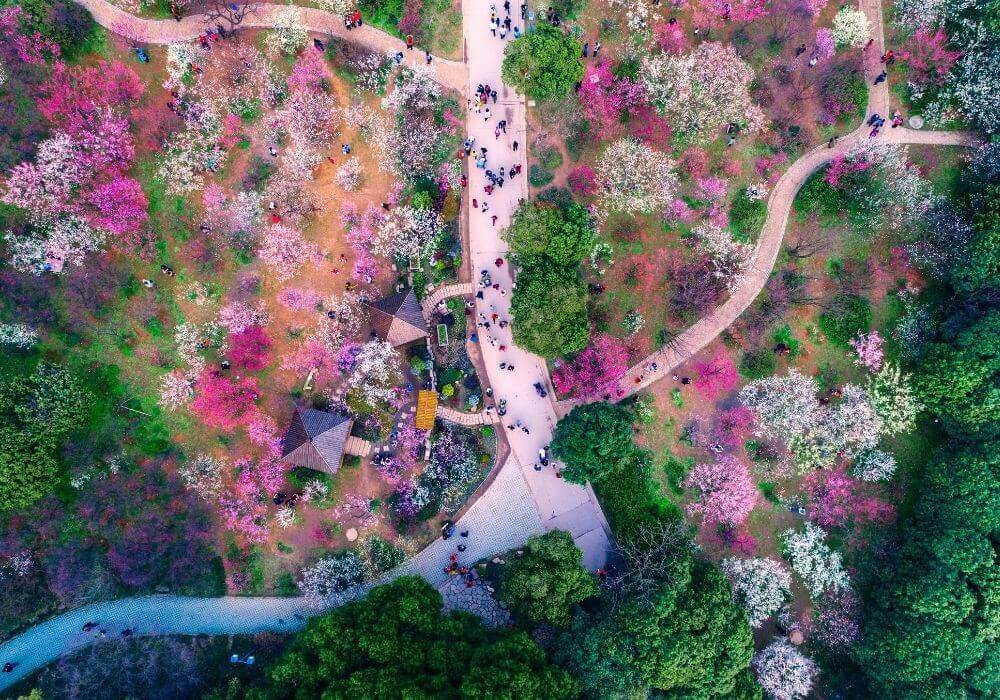
Historically, the shrine of Emperor Meiji in the "Shibuya" district is a must-have among the places to visit in Tokyo. Sensō-ji, which dates back to 628, is the oldest and most important Buddhist temple in Tokyo, but the neighbouring Asakusa Shrine, which is 1,000 years younger, is also very popular.
The most famous intersection in the world is Shibuya Crossing, where all the pedestrian lights turn green at the same time and incredible crowds of people push their way across the crossing.
—
Graphics: Canva.com

